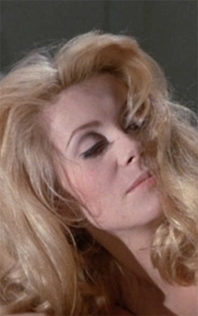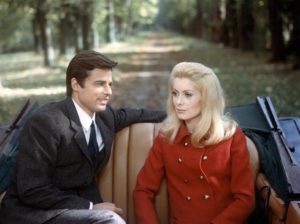
Luis Bunuel uses colour so well in Belle de Jour, with its accents and textures. For its 50th anniversary someone decided to restore the movie in 4k . Through painstaking work, audiences could literally feel Bunuel as he gazes upon Severine (Catherine Deneuve), a bored housewife. This restoration even highlights the crispness of the autumn leaves that she walks through in Paris. It also reminds us of Deneuve at her best. She shows her discontent even when she’s far from the camera or when other people are larger within the frame. She evinces this while resplendently wearing fashions of that time.
Wanting moments of escape, Severine becomes Belle de Jour, a sex worker who fits within the Parisian market. This is still a man’s version of that kind of work, but it’s more complex than your average male gaze. She and her body parts are fetish objects, fantasies, despite of the sexuality of the director. But Bunuel searches for an interior process within Severine, asking the whys and the hows. Female ‘irrationality’ fascinates him the same way female directors lock in on male bewilderment. What do women say to each other, and think about each other’s looks and abilities, he seemingly asks.
The restorations brings for the vision that Bunuel has of Paris. A city that has remnants of the Gilded Age and the postmodern one. A place where the rich still ride in horse carriages even though cars are available. Where fantasies come true and where Belle fulfills them. She introduces herself to clients as Belle as if Severine didn’t exist. The visuals also reinforce how boring these men are with their linty black suits. Men who need fantasy and who need women like Belle. Men feeling the need to belittle Belle, calling her a girl although she’s clearly a woman.
Bunuel lived both through the prurient Roaring Twenties and uses that lens to portray the Sexual Revolution. This, as many female critics would say truthfully, was a movement that benefited men. We don’t only see Belle, her Madam Anais (Genevieve Page), and the other women. We also see the clients. This includes some crass Spanish gangster named Hyppolite (Francisco Rabal). He’s the kind who violentlys steal from a cops to visit the brothel. The women resent him but Bunuel downplays that conflict that everyone in the service industry faces. Bunuel captures the women’s pensiveness in the face of constant danger.
- Release Date: 7/27/2018

